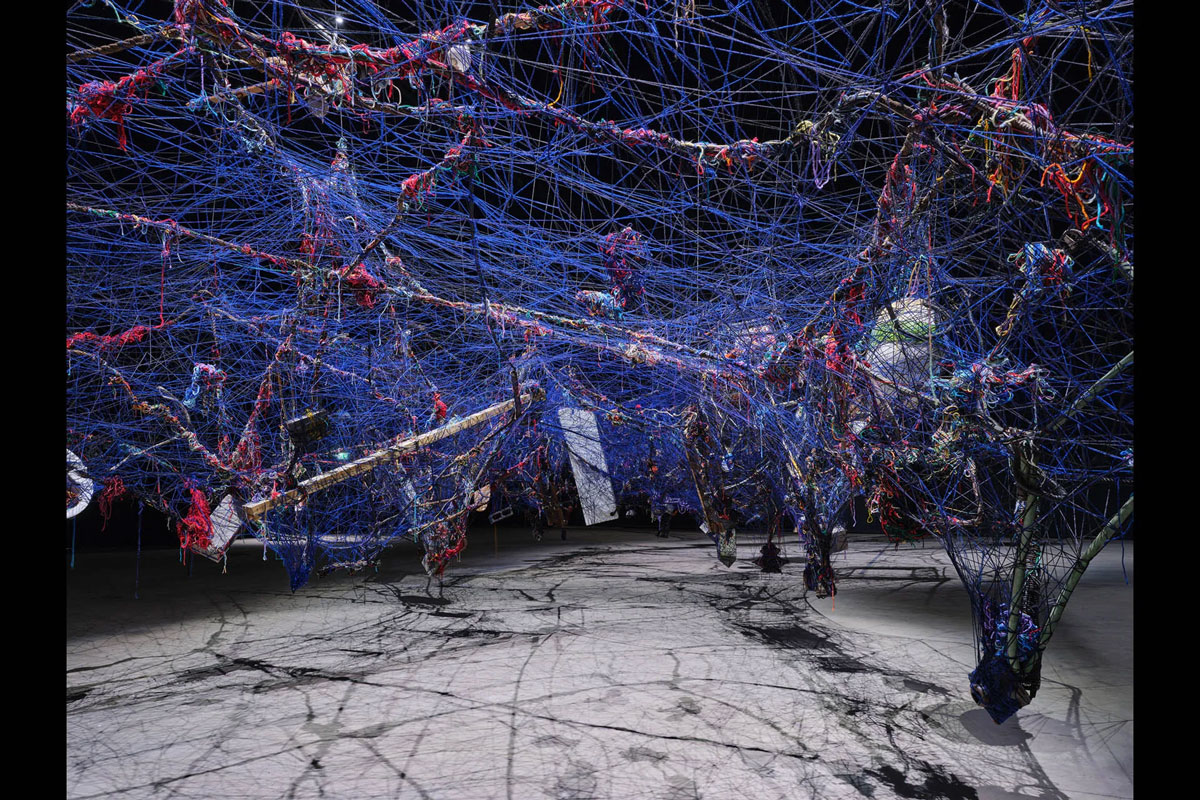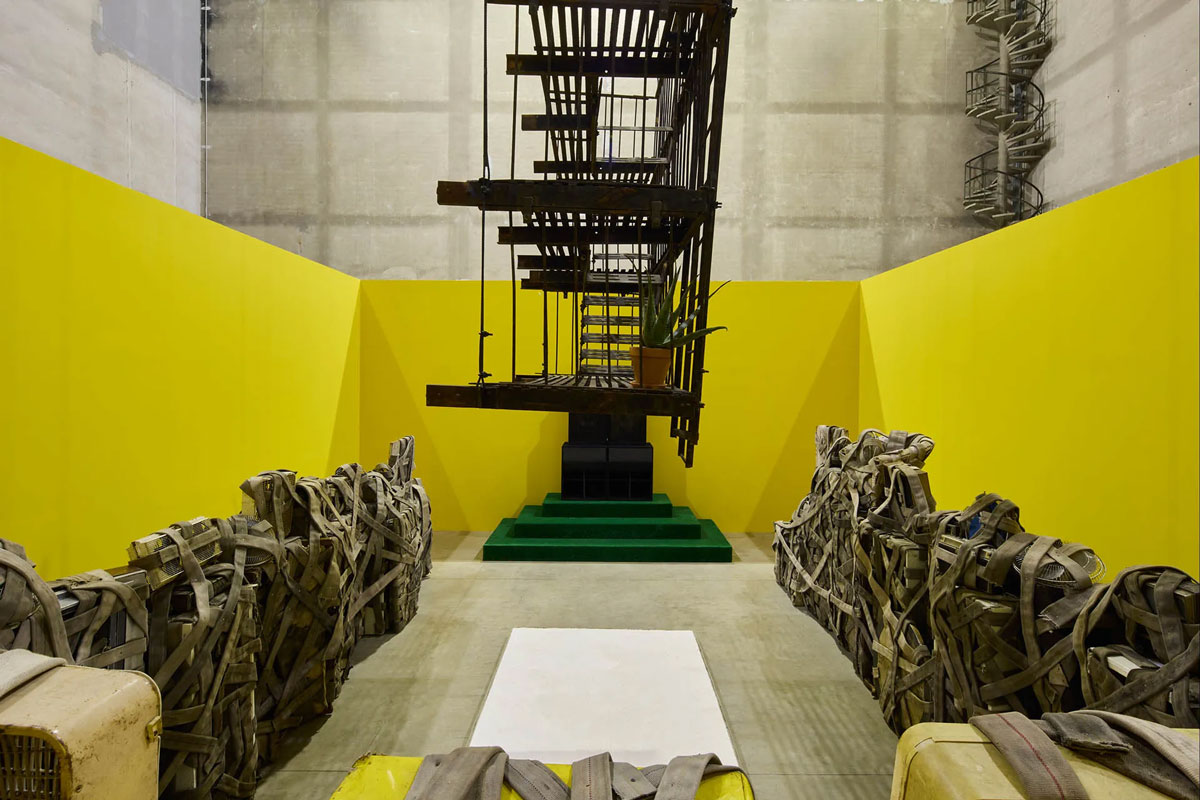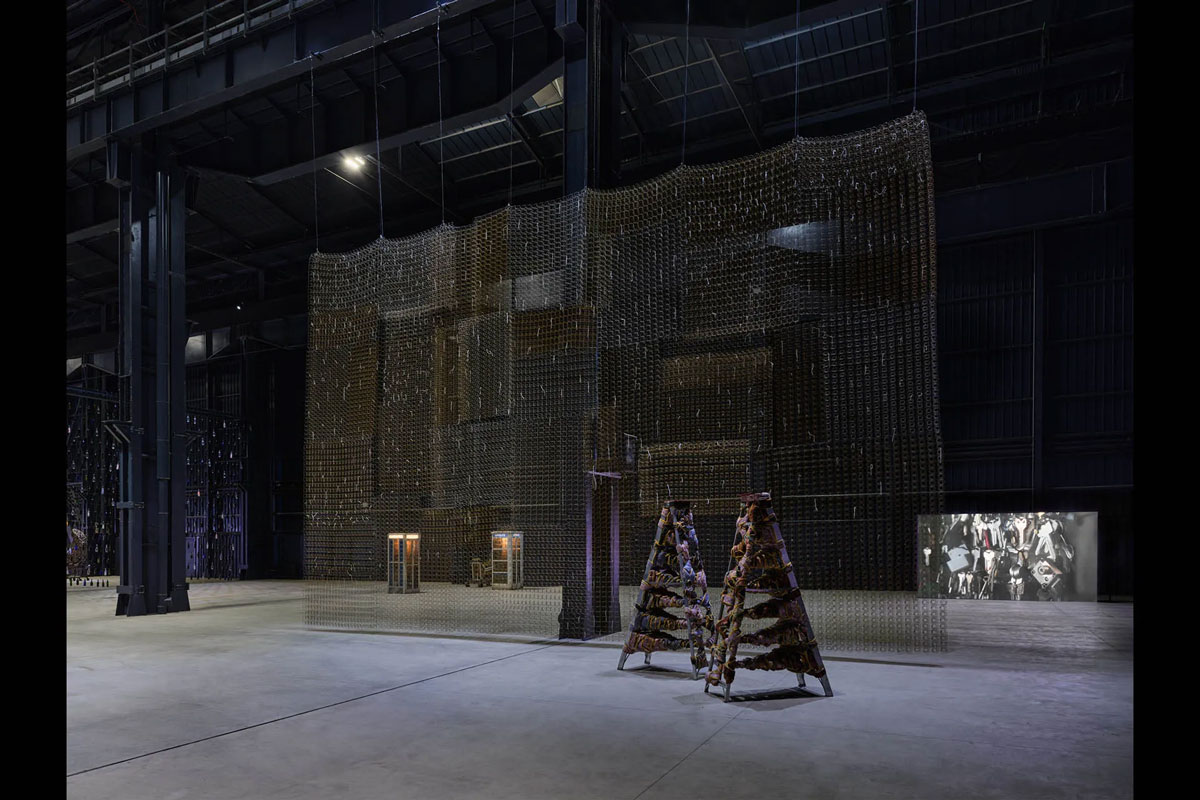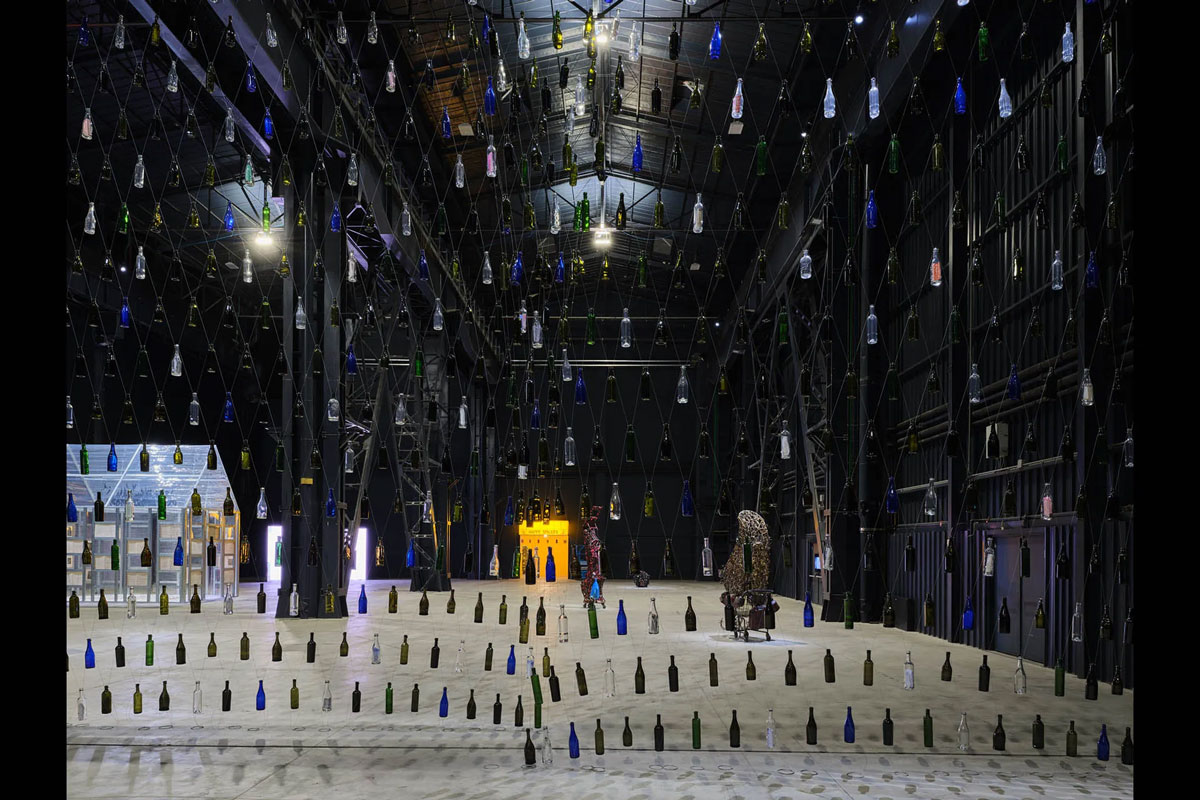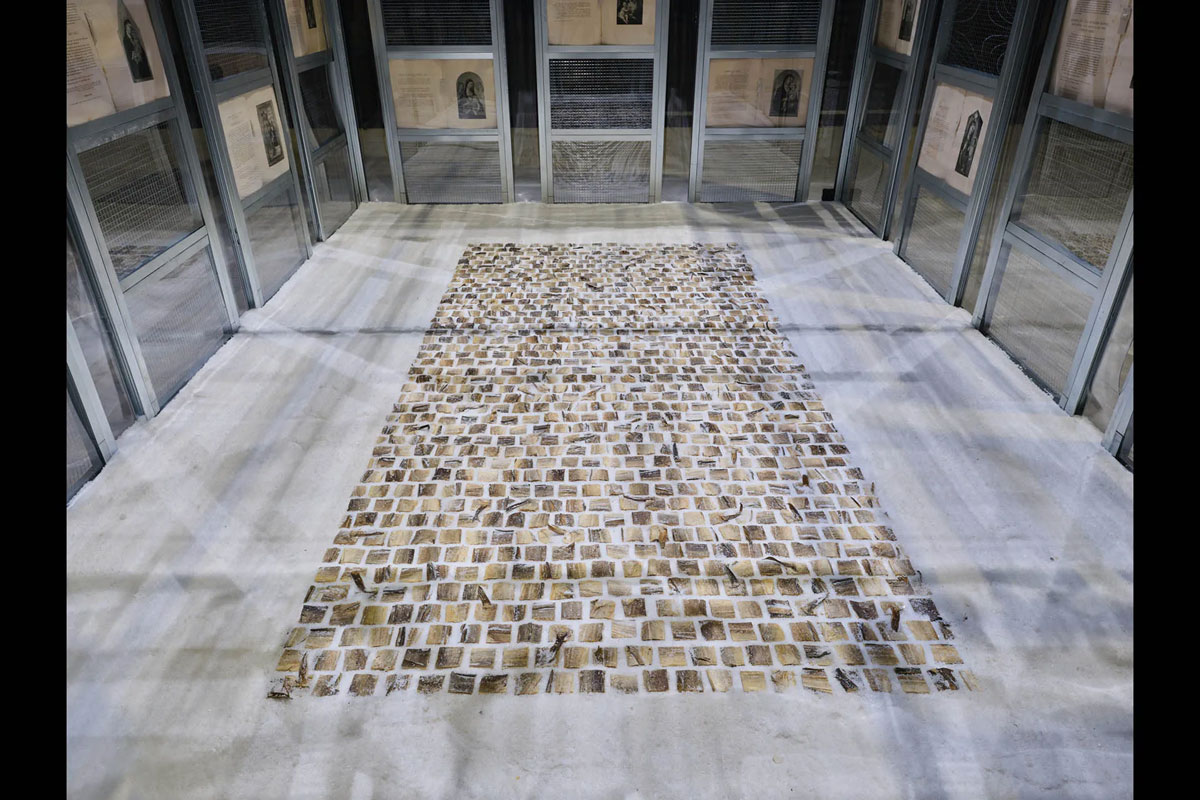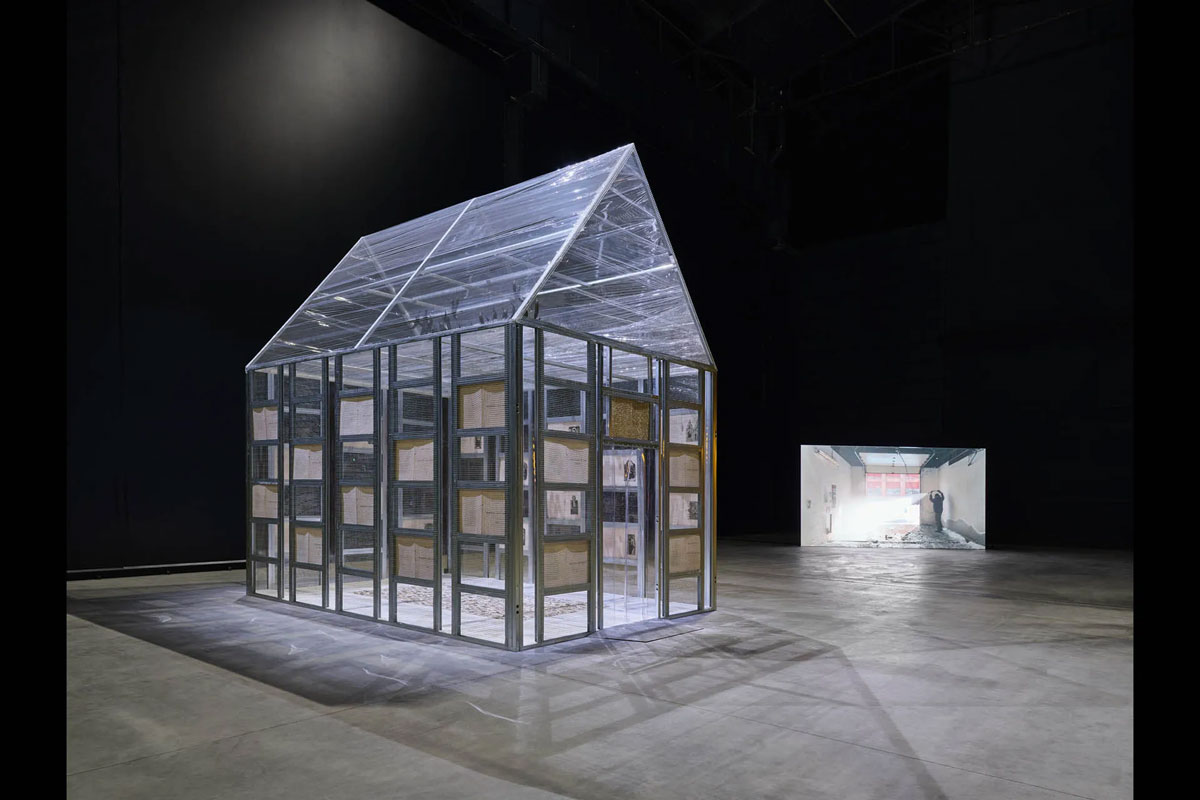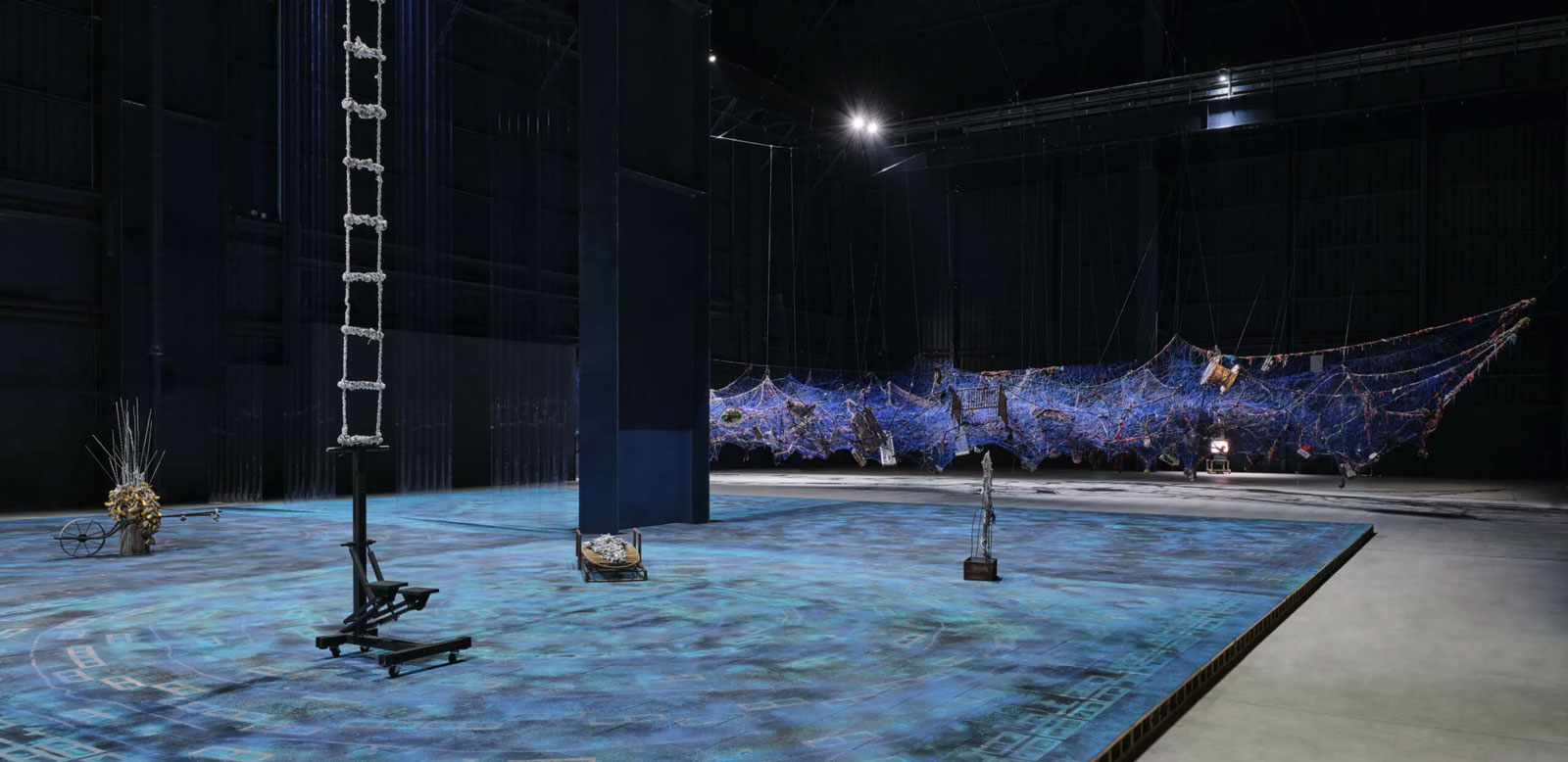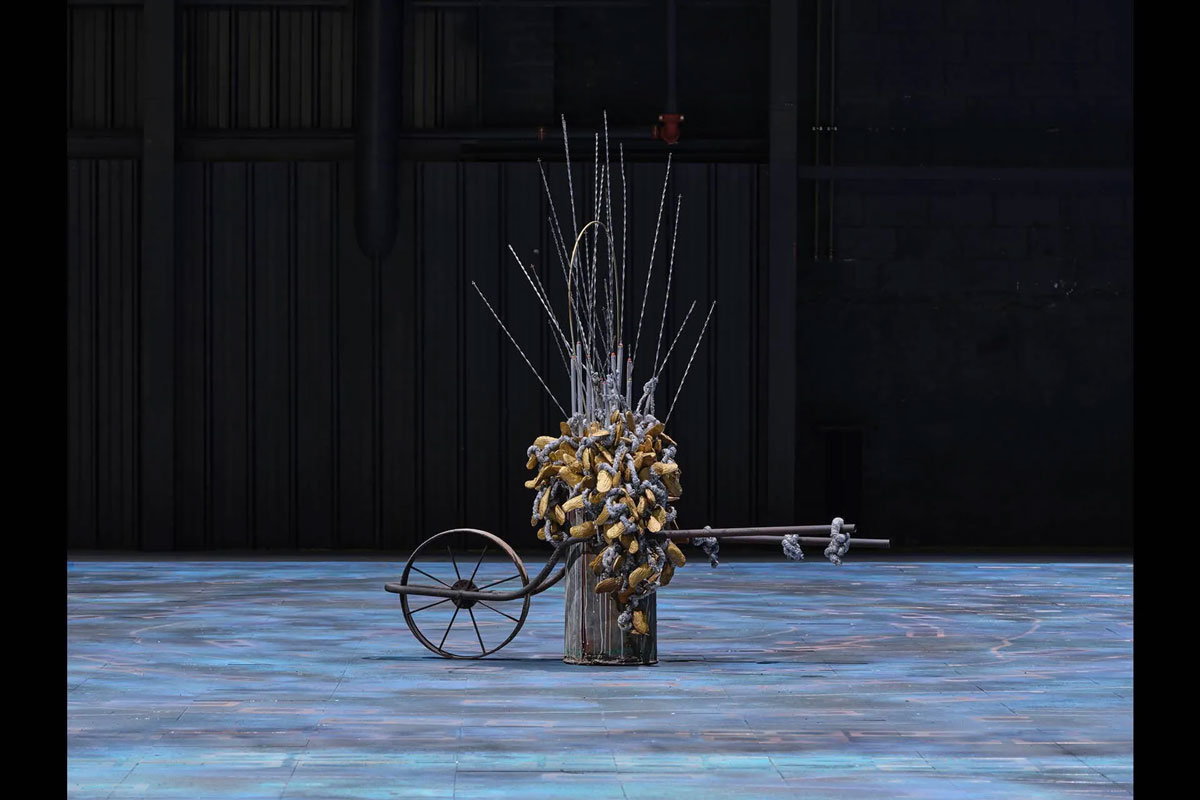ART CITIES: Milan-Nari Ward
 Nari Ward is known for his sculptural installations composed of discarded material found and collected throughout his neighborhood. He has repurposed objects such as baby strollers, shopping carts, bottles, doors, television sets, cash registers, and shoelaces, among other materials. Ward re-contextualizes these found objects in thought-provoking juxtapositions that create complex, metaphorical meanings to confront social and political realities surrounding race, migration, democracy and community, intentionally leaving the meaning of his work open to allow his viewers to provide their own interpretations.
Nari Ward is known for his sculptural installations composed of discarded material found and collected throughout his neighborhood. He has repurposed objects such as baby strollers, shopping carts, bottles, doors, television sets, cash registers, and shoelaces, among other materials. Ward re-contextualizes these found objects in thought-provoking juxtapositions that create complex, metaphorical meanings to confront social and political realities surrounding race, migration, democracy and community, intentionally leaving the meaning of his work open to allow his viewers to provide their own interpretations.
By Dimitris Lempesis
Photo: Pirelli HangarBicocca Archive
The retrospective “Ground Break” presents a large body of work to investigate Nari Ward’s art through projects focused on collab-oration and performance. Playing with the multiple meanings of the words “ground” and “break,” the title hints at the notion of sus-pension and subversion addressed in the exhibition. Exploring the concept of time in Ward’s work through video, sound pieces, sculptures, and installations, the show traces the artist’s 30-year-long career, presenting both historical and seminal works and new productions in non-chronological order. The works on display include four large-scale installations that Ward created between 1996 and 2000 for Ralph Lemon’s performance project “Geography Trilogy”. For the first time since their original presentation, they are included here in an exhibition setting, in dialogue with the scale of the space and the movements of visitors. The exhibition opens with one of the first large installations created by the artist in the 1990s, a site-specific work composed of a complex network of interlaced threads, unveiling hidden found ob-jects within its structure. “Hunger Cradle” (1996-2024) was first presented in 1996 at the “3 Legged Race” exhibition organized by Nari Ward with artists Janine Antoni and Marcel Odenbach at a former fire station in Harlem. The artist describes this first episode: «Basically, I collected elements from the life of the building. It was a building from 1916, a horse and buggy era building. It then belonged to the fire department, and then it became a piano moving company, and then it became a limousine service. There were all these remnants of that history in the building.» In its intricate form, the work thus incorporates car parts, fire hoses, and a piano. Each time it is set up in a new venue, it is adapted to the specific architecture of the space and enriched with new objects found both in the sur-rounding area and on the exhibition site. In the case of the project at Pirelli HangarBicocca, the new elements include, among the others, the same bricks used in “Ground Break”. The act of accumulating and cradling—an action suggested in the title—conjures up the idea of a place of protection but also transformation, like an in-sect’s cocoon. The animated puppet featured in “Parrot Diatribe” (2007) is a parrot that, for almost the entire duration of the video, vents in a diatribe that includes personal observations, statistics, and official statements. This disturbing presence is the narrating voice of a story of abandonment and marginalization. The work was created with the students of the University of Connecticut as part of a project on vulerability and addiction, themes chosen following a field survey conducted by the artist. During his preliminary research, Ward discovered that part of the university campus had formerly been the Mansfield Training School, an institution for young people with cognitive disabilities. As he delved into the local records and news-paper articles and talked to former employees of the facility, he learned of instances of negligence by the institution towards the children. This deficiency in care was also evident in the patients’ files with medical notes found abandoned in the buildings, which the artist used to make the parrot’s plumage. «You said you would get me out of here; it’s been forty years and you never came» is just one of the phrases the parrot speaks directly as if it were one of the young people. The bird also sings covers of Frank Sinatra’s “Nice ’n’ Easy” and “I Got Love” by Melba Moore, discovered on a 1971 vinyl record of the Mansfield Training School Band and Blind Chorus. The video, together with the scales on which it is displayed, was part of “Nari Ward: Salvage Research Soul Training Project,” the exhibition staged at the Contemporary Art Galleries of the University of Connecticut in 2007. The other components of the installation, including wheelchairs, candles, and the parrot puppet itself were un-fortunately destroyed by Hurricane Sandy in 2012.
“Ground Break” (2024) is a floor installation composed of more than 4000 concrete bricks topped with copper sheets. Ward’s choice of cop-per is not only due to its physical characteristic of ductility, but also to its regenerative influences, recognized in healing practices in many diasporic cultures, and in reference to its use in art history. A decorative spiral motif referring to the cyclical nature of the cosmos emerges on the entire surface through a process of stenciling and chemical patination. The design is embellished with small transparent beads, remnants of a previous work. In the iteration presented in Pirelli HangarBicocca, which follows an initial smaller one with a different motif made in 2015, the artwork is enriched with sound activations Groundings under the direction of artist Justin Randolph Thompson and features the participation of other artists and activists, Jermay Michael Gabriel, Andre Halyard, Dudù Kouate, Mackda Ghebremariam Tesfaù and SADI, who will carry out a series of performances over the course of the exhibition with instruments and sounds inspired by the materials of Ward’s production. In “Wishing Arena” (2013) the artist engages with religious architecture, reproducing the form of a votive altar that develops like an imposing structure in the exhibition space. The work is composed of several ladders with 98 baskets placed on its rungs. Each holds an un-lit electric votive candle, waiting to be switched on. The installation is designed to make the viewer perform a gesture recalling the act of faith of lighting a candle. The work does not refer to the religious sphere but is rather an evocative poetic device conceived to re-connect with the most intimate part of oneself, linked to desire. In-deed, each light is connected to a tin can into which visitors can whisper their dream as if it were the handset of a “cordless tele-phone,” while the antecedent act of turning on the light is left to an-other person. In conjunction with the opening of the exhibition, the work is activated until all the candles are lit, becoming a place that houses hope and wishes. Installed next to each other, “American Bottle Anthem Booth” and “Italian Bottle Anthem Booth” (both 2024) are made especially for the exhibition and are built around two telephone booths. The use of these ob-jects is a way for the artist to explore the influence of pop culture on the collective imagination. «I wanted to reinvestigate the use of the booths. They are from another time, there is a cliché of these booths being correlated with them, as Superman changing his garb.» The now abandoned cabins become showcases and repositories for mattress springs and bottles stuffed with foam rubber. A few familiar-sounding music tracks emanate from within, rendered muffled and distant by the pile of materials. The high-pitched music, with metallic sounds, consists of various interpretations of the American and Italian national anthems composed using the sound of glass bottles and water. In this work, the artist invites us to reflect on the significance of nationalisms that promote the idea of a mythical origin of national identity and, through the accumulation of materials, to perceive the layered nature of the history of identity.
Photo: Nari Ward, “Ground Break”, Exhibition view, Pirelli HangarBicocca-Milan, Photo: Agostino Osio, Courtesy the artist, Lehmann Maupin New York / /Seoul / London, GALLERIA CONTINUA and Pirelli HangarBicocca, Milan
Info: Curators: Roberta Tenconi with Lucia Aspesi, Pirelli HangarBicocca, Via Chiese 2, Milan, Italy, Duration: 28/3-28/7/2024, Days & Hours: Thu-Sun 10:30-20:30, https://pirellihangarbicocca.org/
